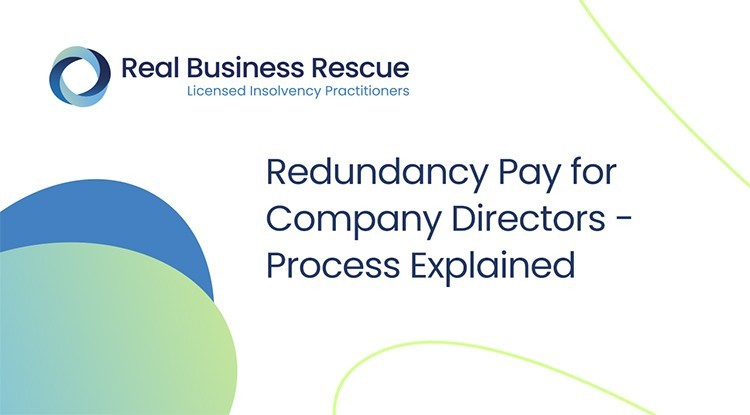Small Business Closing Employee Rights UK: Guaranteeing Fair Redundancy Pay
Small Business Closing Employee Rights UK: Guaranteeing Fair Redundancy Pay
Blog Article
Investigating the Interplay In Between Company Redundancy and Business Versatility for Future Growth
In the vibrant landscape of today's company globe, the elaborate relationship in between business redundancy and business adaptability becomes an important element for continual development and success. Business typically face the challenge of striking a delicate balance in between maintaining a level of redundancy to reduce threats and cultivating versatility to react swiftly to the ever-evolving market needs. This delicate interaction holds the vital to not only surviving in stormy times yet also flourishing when faced with uncertainty. As we explore the multifaceted dimensions of this interaction, interesting insights into how companies navigate these complexities to lead the method for future development await.
Relevance of Firm Redundancy
Company redundancy is an essential component that boosts organizational durability and mitigates functional risks. By including redundancy measures within the organizational structure, firms can better hold up against unforeseen disruptions and changes in business atmosphere. Redundancy works as a critical buffer, allowing business to adjust and react effectively to unforeseen difficulties without compromising essential procedures.
One secret aspect of the relevance of firm redundancy is its duty in making sure connection throughout times of crisis. When confronted with unexpected modifications or emergencies, redundant systems, sources, or personnel can action in to preserve crucial features and avoid prevalent interruptions. This connection not only safeguards the company's track record and client depend on yet also reduces financial losses and functional downtime.

Techniques for Organizational Adaptability

An additional important method is investing in innovation and facilities that can support versatility and scalability. Carrying out digital devices, automation, and data analytics can enhance procedures, boost effectiveness, and give useful understandings for notified decision-making. In addition, producing adaptable business frameworks that enable for fast adjustments to market dynamics and consumer needs is vital for remaining competitive in a swiftly evolving setting. By proactively determining possible disturbances and possibilities, organizations can proactively grow and adjust in an ever-changing organization landscape.
Harmonizing Redundancy and Flexibility
Achieving an unified stability between functional redundancy and organizational adaptability is paramount in browsing the intricacies of a vibrant business environment. Striking the best equilibrium between redundancy and flexibility is a delicate process that calls for a deep understanding of the organization's objectives, sector characteristics, and danger resistance.
To attain this balance, firms need to conduct routine analyses of their procedures to determine locations where redundancy is necessary for danger reduction and where adaptability can drive innovation and growth. Carrying out flexible structures, fostering a culture of constant knowing and improvement, and urging open interaction across all levels of the organization are key approaches to balance redundancy and adaptability successfully. By straightening these two crucial aspects, firms can place themselves for lasting growth and success in an Get More Info ever-changing company landscape.
Case Studies on Adaptation Success
In analyzing circumstances of effective business adaptation, it comes to be obvious that the interplay between operational redundancy and adaptability is a specifying factor in shaping resistant businesses. A DVD rental service, Netflix demonstrated exceptional adaptability by transitioning right into a streaming system when digitalization disrupted the industry. These situation research studies emphasize the significance of operational redundancy combined with organizational adaptability in promoting long-term development and competition.
Structure Resilience for Future Growth
Building strength for future growth calls for a critical placement of operational procedures with market dynamics and arising trends. Business must adjust to altering environments by cultivating a society of flexibility, development, and continuous enhancement. Durability entails not just recovering from problems yet likewise proactively preparing for future challenges. One vital aspect of building strength is purchasing durable risk administration approaches to mitigate potential disturbances. This consists of scenario planning, expanding supply chains, and creating contingency plans for different backups (who pays redundancy money).
Additionally, fostering strong partnerships with stakeholders, such as customers, employees, vendors, and the community, is crucial for preserving and weathering unpredictabilities trust fund and assistance throughout turbulent times. Efficient interaction and transparency play a vital duty in building strength, as they assist straighten expectations and facilitate collaboration in browsing unpredictabilities.
Furthermore, organizations need to prioritize discovering and growth efforts to upskill workers and equip them with the required tools to adapt to transforming conditions. By buying their labor force, companies can enhance their flexibility and dexterity, ultimately strengthening their resilience for lasting future development.
Final Thought

In the dynamic landscape of today's business world, the complex relationship in between firm redundancy and visit this website business flexibility emerges as an essential variable for continual development and success. Business typically face the challenge of striking a delicate balance between maintaining a degree of redundancy to alleviate threats and have a peek at this website cultivating flexibility to react quickly to the ever-evolving market demands.To accomplish this equilibrium, business require to perform routine assessments of their operations to identify locations where redundancy is necessary for risk mitigation and where adaptability can drive advancement and development.In verdict, the interplay in between company redundancy and business adaptability is crucial for future development. Structure durability through a mix of redundancy and versatility will make certain that firms are prepared for the difficulties of the future.
Report this page